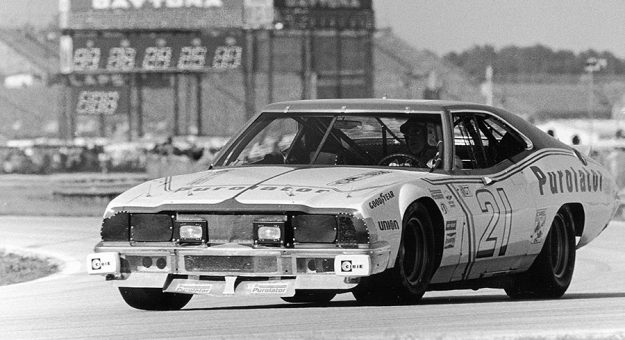CONCORD, N.C. — As I write this, the annual spring pilgrimage to Darlington (S.C.) Raceway is in full song. This is important, and I think you know why.
NASCAR, and motorsports in general, is a sport that has a rich and varied history and, in an attempt to keep that history close, teams use the return to NASCAR’s first superspeedway as a way to pay it homage.
Going back and celebrating the history of the sport is a good way to keep it moving forward. Remembering the titans of yesteryear is a signal to the newcomers that there is a varied palette to pore over and appreciate.
Think of your favorite drivers and the way their cars looked when in their prime. Find a way to tie that into something that will appeal to the race fan and you have a recipe for some special magic.
Companies that sponsor race teams understand this, and so do race fans. Some people might think it’s a cynical money grab, but that’s not the case. Sure, teams will do a die-cast or T-shirt featuring the throwback scheme and they’ll cover their costs and a little more, but it is more simply a way to keep the timeline moving forward by returning to the past.
For me, the classic paint schemes — Wood Brothers Racing’s No. 21, Richard Petty’s Dodges and Plymouths, the iconic Wrangler and GM Goodwrench motifs of The Intimidator, among others — have been done before, but they never get old to my eyes (which are getting older every day, thank you very much).
It’s the lesser-known schemes (relative to the ones above) that I love to see. Harry Gant’s Skoal cars are tops among those, along with the Folgers machines of Tim Richmond, Ken Schrader and Mark Martin. One of them that I really like is the old Piedmont Airlines scheme of Terry Labonte, with which he won a championship the year after I graduated high school in 1984.
Going further back, the old black-and-gold paint scheme run by Smokey Yunick is a killer scheme. It was clean and crisp and bore the No. 13, which fit ol’ Smokey to an absolute T. Never has there been a more cantankerous — and smarter — racer than Yunick, and if you haven’t already, get a copy of his memoir (“Best Damn Garage in Town”) and find out why I say that.
Rusty Wallace had some darn fine Miller cars in the day and the best one to me was the Elvis throwback. It was blue on each end and silver in the middle. It just lit up the track.
Beauty to me is simplicity and there’s nothing simpler than the old K&K Insurance Dodges driven by Bobby Isaac and Dave Marcis. Orange with white letters — what you see is what you get. The pre-STP Petty cars are classic in that same way, only with Petty blue and white.
There is a tangible tie to racing’s roots that other sports seem not to have, at least in my opinion. Baseball’s throwbacks are not nearly as cool as NASCAR’s, and don’t get me started on the NFL throwback uniforms. It’s a Rorschach test with a riot of color — the same color — and you can get sick from seeing them in my opinion.
Throwback schemes are, as stated above, ties to the past. When I see them, I think of the drivers they celebrate, and that’s a good feeling. Some of the cars I would like to see done again include Mike McLaughlin’s old Coors Extra Gold-backed NASCAR modified, Steve Kinser’s Quaker State sprint car and the old Elder Cadillac sprint car driven by George Snider and others.
Others include Ramo Stott’s original Dow Chemical Plymouth Superbird, the Jet Titanium laydown sprint car driven by Steve Chassey and anything with the STP red only (Gordon Johncock’s 1973 Indy winner, Mario Andretti’s Brawner Hawk, etc.). A special favorite is the Gurney Eagle that Chip Mead tried to qualify at Indianapolis — its sponsor was White Castle. Being a son of the Hoosier State, that’s important.
Throwbacks are cool, to me, and more importantly, they are a way to stay in touch with those who came before us.
